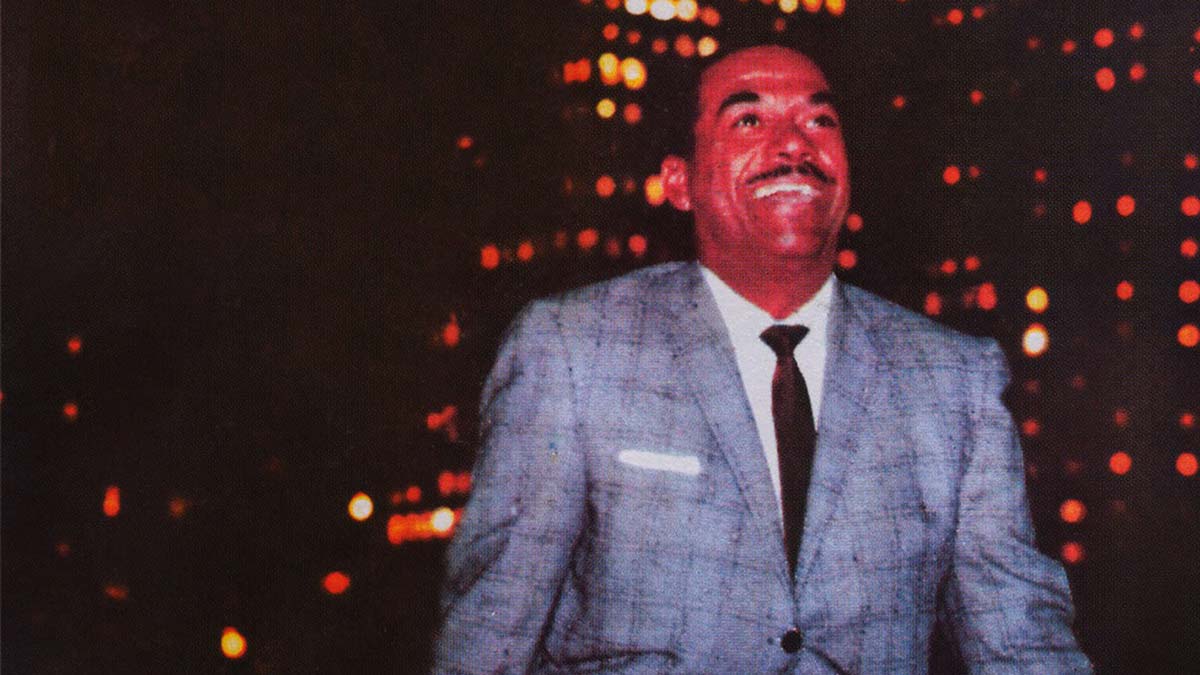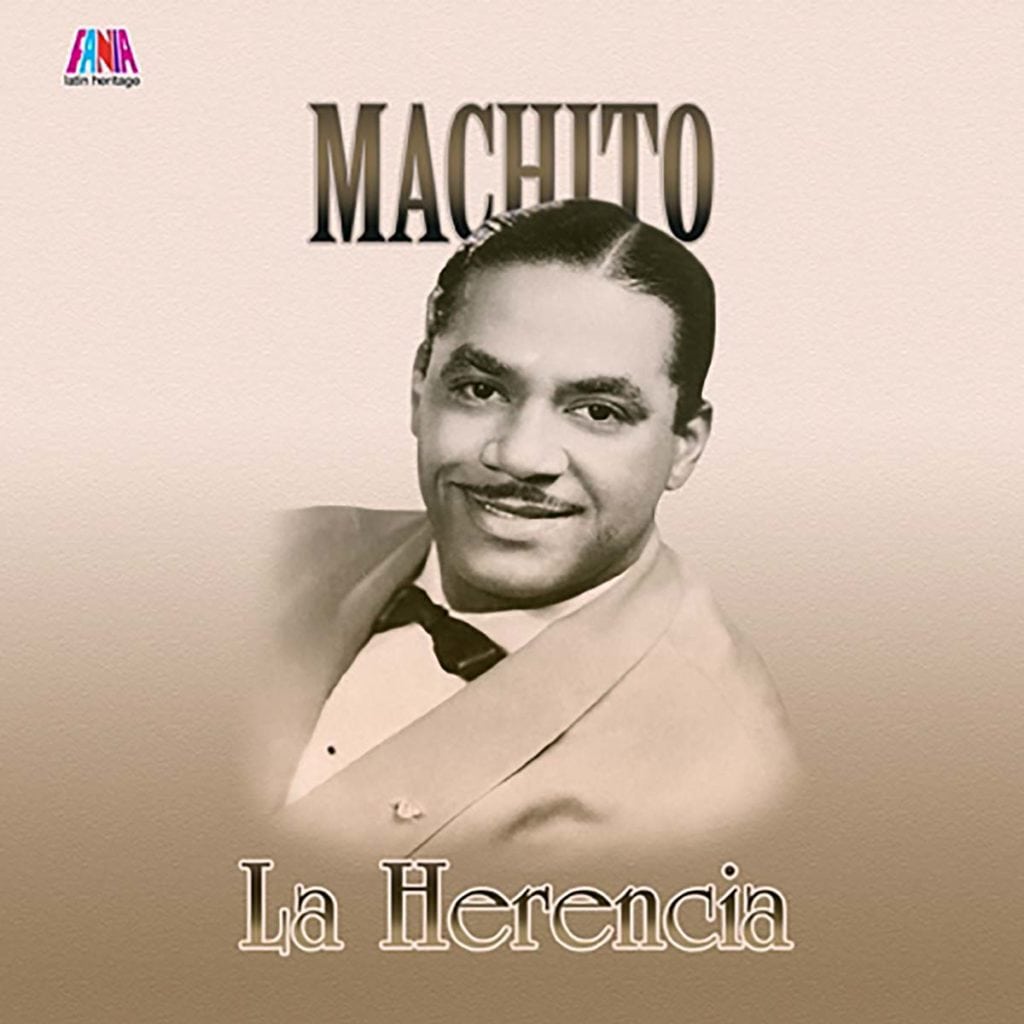
He is one of the most criminally underrated artists in the landscape of Afro-Caribbean music. A musical genius and mercurial bandleader whom Tito Puente himself called el maestro – the master. Now, this volume in the La Herencia series allows us to rediscover and cherish the legacy of Francisco Raúl Gutiérrez Grillo.
Everything about Machito was unique and different. He was one of the few Afro-Cuban singers who performed both coro (chorus) and inspiraciones (verses) within the same tune. He shared vocal duties with his sister, Graciela Pérez-Grillo, creating mellifluous harmonies that are instantly recognizable. Most importantly, Machito infused every song in his dozens of albums with an air of bonhomie. Once you discover the warmth and giddy sense of humor that define his recordings, you will probably be hooked – just like the many Machito fans all over the world who get a smile on their faces with the simple mention of the man’s name.
Born in 1908, Machito was the son of a cigar manufacturer. In 1937, he left his native Cuba for New York – a move that would change the history of Latin music. After working with tropical luminaries of the time such as Cuarteto Caney, Noro Morales and Xavier Cugat, Machito founded his own group, the Afro-Cubans, in 1940. Together with his brother-in-law and musical director Mario Bauzá, he was one of the pioneers of the Latin jazz movement – their track “Tanga” was just as groundbreaking as “Manteca,” the historic collaboration between Dizzy Gillespie and Chano Pozo.
But to think of Machito simply as a Latin jazz musician would be a huge mistake. Yes, his 1957 album Kenya is one of the genre’s most influential recordings. But Machito thrived in every tropical style imaginable: he recorded mambos and cha cha chas with unparalleled panache, but never forgot to include a steamy bolero in his repertoire. Boasting earth shattering performances by Graciela, Machito’s boleros are some of the most transcendental examples of the genre. As decades passed, Machito made it a point to inform himself about the latest trends in music. He explored the bossa nova, Latin Soul and boogaloo fads.
The decade between the mid ’50s and the mid ’60s was a time of prodigious creativity for Machito and his orchestra. Its musicians and vocalists were at the peak of their powers, and they recorded copiously. It was also the time when the orchestras of Machito, Tito Rodríguez and Tito Puente competed against one other at the mythical Palladium – the temple of Afro-Cuban music in New York.
The tracks on this collection are culled mostly from the albums that Machito recorded for the Tico label during that period: classic LPs such as Sí Sí, No No (1956), the forgotten masterpiece Machito Inspired (1957), A Night Out (1960) and Tremendo Cumbán (1963).
The opening track in this anthology is an electrifying version of the classic Cuban tune “El Yerbero.” Check out the tightness of the brass section, as well as the vocal exuberance of both Machito and Graciela. This is the kind of swing that only the few true masters of Afro-Caribbean dynamics can possess.
Included in Tremendo Cumbán, “Escúchame” is one of the few boleros where Machito can be heard sharing lead vocals with his sister. Their voices soar, backed by a silky big-band arrangement. Also from the same album, the inimitable “Franciscua Guajira” showcases Machito’s eccentric sense of humor. After launching into the infectious chant “que sea como sea/que para bien sea,” Machito and Graciela engage in a hilarious dialogue that also involves singer/songwriter Marcelino Guerra. The track fades out with the sound of Graciela’s hearty laughter.
A sarcastic ode to the climatological pleasures of New York City, “Freezilandia” includes a touch of doo-wop vocal harmonies and a sweet mood of wide-eyed innocence about it – it is one of the orchestra’s most endearing songs. The same doo-wop influence can be heard on Graciela’s dreamy reading of the timeless bolero “Contigo En La Distancia.”
The exotic “Heat Wave” is a lush instrumental cover of the 1933 Irving Berlin standard – from a 1959 LP devoted solely to Latinizing the Berlin songbook. Transposing American classics to tropical music was a popular stylistic device of the time, used with equal success by Tito Puente and Tito Rodríguez.
“Sopa de Pichón,” which Machito composed himself, was one of his first big hits with the Afro-Cubans. The crisp version that we chose to include here is from the 1959 session Cha Cha Cha At The Palladium.
In 1956, Graciela had caused a stir with the salacious (and somewhat overwhelming) “Sí Sí, No No.” The singer would step into similar double-entendre territory again with the hit “Ay, José.” It was included in the excellent 1963 LP Esta Es Graciela, which together with Intimo Y Sentimental, were Machito’s last two releases for Tico – and an attempt to launch Graciela herself as the star of the Machito orchestra.
In the mid ’70s, Machito would take a decision that remains puzzling to this day. In an attempt to compete with the smaller salsa combos of the time, he downsized his group, leaving behind both Graciela and Mario Bauzá. “I don’t know what got to him,” says Graciela from her New York apartment, with sadness in her voice. “To this day, there is no explanation for what he did.”
Machito carried on, recording with former Eddie Palmieri vocalist Lalo Rodríguez. By the early ’80s, his sound had embraced the contemporary salsa aesthetics that he himself had helped develop. The closing track on this anthology, “Soy Salsero,” draws a full circle – from Afro-Cuban jazz pioneer to salsa star.
El maestro Machito passed away in 1984, after suffering a heart attack during a performance at the London jazz club Ronnie Scott’s. Musically, he was still at the top of his game.
We hope that the 16 tracks in this compilation will inspire you to delve deeper into the Machito discography. Together with the inimitable Graciela, he represents the very essence of Latin music – its warmth, spiritual generosity and life affirming joy.



